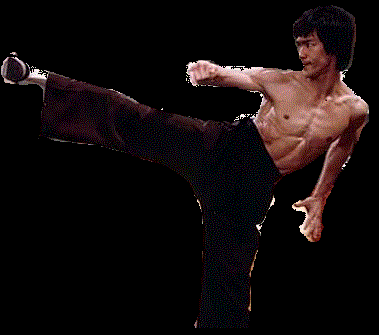A kunai (苦無 kunai) is a Japanese tool possibly derived from the masonry trowel. Two variations are the short kunai (小苦無 shō-kunai) and the big kunai (大苦無 dai-kunai). It is a good example of a very basic tool which, in the hands of a martial arts expert, could be used as a multi-functional weapon. It is commonly associated with the ninja, who used it to gouge holes in walls.
Kunai


Design:
The kunai was conventionally wrought in ranges from 20 cm to 60 cm, with the average at 40 cm. The kunai was used by common folk as multi-purpose gardening tools and by workers of stone and masonry. The kunai is not a knife, but something more akin to a crowbar. The blade was soft iron and unsharpened because the edges were used to smash plaster and wood, to dig holes and to pry. Normally only the tip would have been sharpened. The uses to which a kunai was put would have destroyed any heat-treated and sharpened tool like a knife.
Kunai normally had a leaf-shaped blade and a handle with a ring on the pommel for attaching a rope. This would allow the kunai's handle to be wrapped to act as a grip, or when used as a weapon; to be strapped to a stick as an expedient spear, to be tied to the body for concealment, or to use as an anchor or piton. Contrary to popular belief, they were not designed to be used primarily as throwing weapons, though they can be thrown and cause damage. Instead, they are a thrusting and stabbing implement.
Use:
Many ninja developed weapons that were merely adapted farming tools, not unlike those used by Shaolin monks in China. Since kunai were cheaply produced farming tools of a decent size and weight, and could be easily sharpened, they were readily available to be converted into simple weapons.
As a weapon it is larger and heavier than a shuriken, and with the grip could also be used in hand to hand combat more readily than a shuriken. In addition, it could be used for climbing, as either a kind of grappling hook, or a piton.
There are several varieties of kunai, including of short kunai, long kunai, narrow bladed types, saw-toothed types, and wide bladed types. In some cases, the kunai and the shikoro, a wide bladed saw with a dagger-type handle, are hard if not impossible to distinguish. The kunai blade can be used to gouge holes in a wall to take out doorknobs.
Popular culture:
As with the ninjutsu, the exaggeration persistent in ninja myths played a large role in creating the current popular culture image of kunai. In the mythology of ninja, the kunai is commonly portrayed to be a Japanese knife that is used for throwing as well as stabbing. The kunai is often portrayed in manga/anime and video games as a common weapon for ninjas (either primary or backup).



